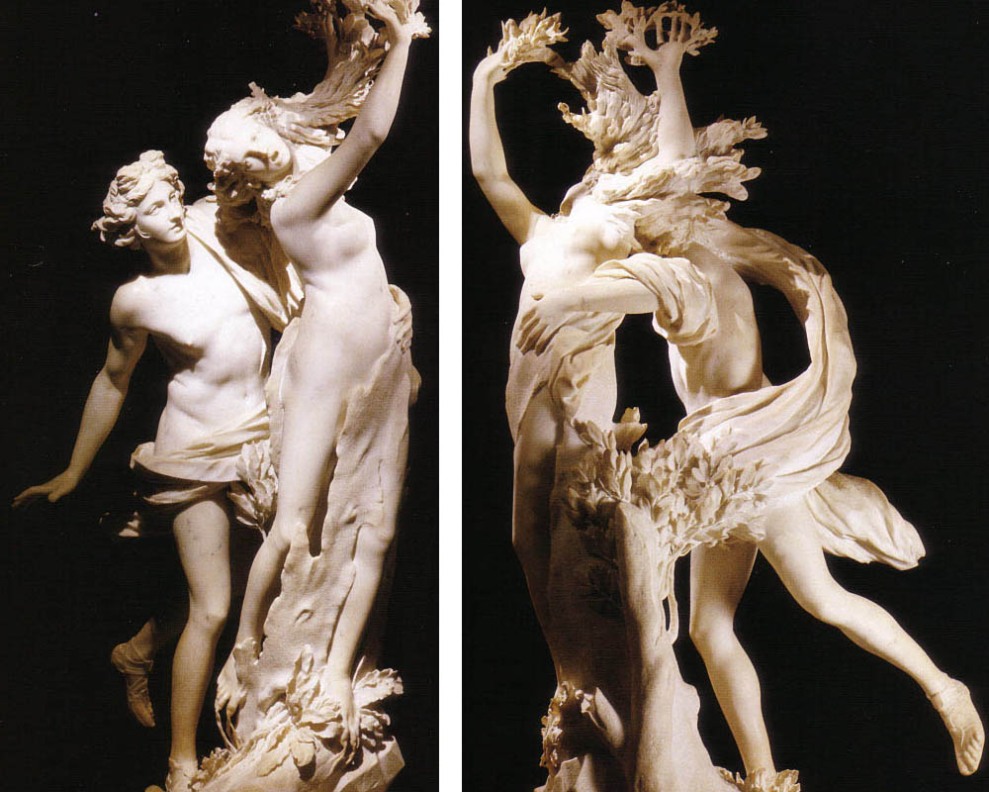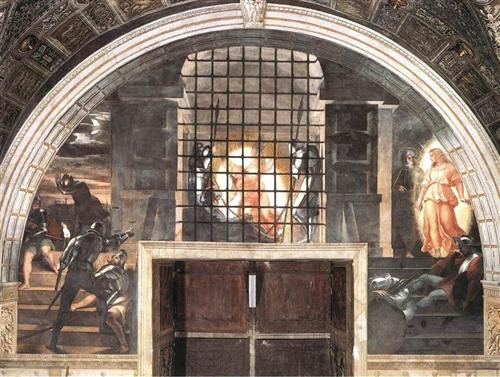 |
| Gian Lorenzo Bernini, The Rape of Prosperina, 1621-22 |
 |
| Gian Lorenzo Bernini, The Rape of Prosperina, 1621-22 detail |
I don’t know a lot about Renaissance/early Baroque
sculpture, but I do know that David,
1623-24, Apollo and Daphne, 1622-25, and
The Rape of Prosperina, 1621-22, are
masterpieces. The first of the three that I saw, The Rape of Prosperina by Pluto was devastating. I approached it
from the left, and as Pluto’s triumph is screamed from his laughing mouth, my body went cold. As Prosperina pushes him away with one hand, the other in the
air, a tear running down her face, I felt her terror. His celebration of the
enormity of his conquest made me want to kill him. The clutch of his hand on
her thigh, pressed into her flesh, must be the most exquisite moment in the
history of marble sculpture. It is so sensuous, so erotic, so lifelike. And
then as I walked around the sculpture, from the right, I saw Prosperina pushing
him away, his laughter becoming a grimace, and I was relieved to see that she
was the throes of escaping his grasp. And then I moved still further, to be
confronted by the angry barking of the three-headed dog, and the two human
figures were caught in the struggle with the fabric of Prosperina’s dress. Bernini
thus creates a series of narrative scenes in the single marble group.
 |
| Gian Lorenzo Bernini, The Rape of Prosperina, 1621-22 detail |
 |
| Gian Lorenzo Bernini, Apollo and Daphne, 1622-25 |
Having completed The Rape
of Prosperina at age 23, the Cardinal then commissioned Bernini to sculpt
the story of Apollo and Daphne. Perhaps the most beautiful thing I saw in my
four days in Rome was the billowing fabric caught in the wind and the rush of Daphne’s
escape as she turns into a tree. The fabric, her hair becoming leaves,
magically articulates their speed, the passion she needs to escape, the urgency
of her motion, the desperation of his pursuit. And the wind filled fabric
becomes even more sensuous, more beautiful when we remember that the process of
marble sculpting: the young Bernini found these figures hidden in his block of
marble. This was his discovery, figures that have the energy to break free of
the marble in which they are trapped. Bernini is the hero because he was the
conduit, the facilitator of their escape – he found them in the stone and set
them free.
| Gian Lorenzo Bernini, David, 1623-24 |
Over one hundred years after Michelangelo’s David, 1504, Bernini gives him a face filled
with expression, determination, and once again, a body in the throes of energetic
movement. Like the other commissions, David
broke new ground because he was in motion, fully energized in the middle of
combat. What is so unusual is that David is immersed in his task to slay the giant,
but there is no giant in the sculpture. It
is movement that makes these figures so magical. They are three dimensional,
moving not only through space and narrative situations, but also through a
spectrum of emotions and possibilities. Moreover, their motion not only becomes
possible, but also heighted by the presence of a spectator in motion, around
the groupings. This incitation to a moving spectator would likewise set new
standards and expectations for sculpture in the Baroque period to follow.












